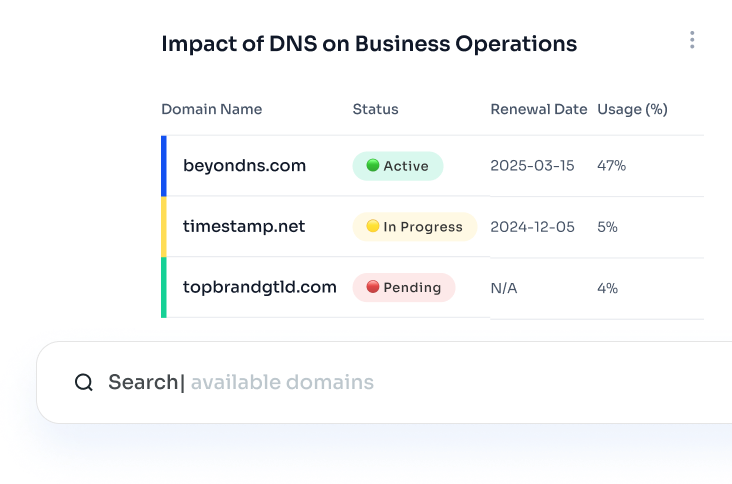Securely Manage
Domain Names Across
Different TLDs: Things
to Consider?

Recommended key steps and processes companies need to effectively, and securely, manage domain names across different TLDs?

Strategic Domain Registration
Start by strategically registering domain names. This includes securing variations and misspellings of your main domain across various TLDs to protect your brand. Prioritize domains based on business relevance, geographic targeting, and brand protection needs.

Centralized Domain Management
Use a centralized approach to manage all domain registrations. This can be facilitated by using a single, reputable domain registrar or a domain management service. Centralizing domain management helps in tracking renewal dates, ensuring consistent administrative contacts, and simplifying management tasks.

Consistent Administrative Details
Maintain consistent contact details across all registrations. Administrative, technical, and billing contacts should be up-to-date to prevent issues with domain renewals or registrar communications. This also helps in quickly addressing any potential security concerns that may arise.
“Apply robust DNS security measures such as DNSSEC (DNS Security Extensions) to protect your domains from DNS spoofing and cache poisoning attacks. Regularly update DNS records and monitor for unauthorized changes that could indicate DNS hijacking.”
Sven-Holger
Solutions Architect


Ensure secure domain transfer processes are in place if you need to change registrars or buy and sell domain names. This includes using authorization codes, confirming identity before transferring, and adhering to the transfer policies of your registrar.

Automate renewal processes or establish reminders to manage domain expirations effectively. Allowing a domain to expire can lead to service disruptions or worse, domain squatting, where malicious actors may register your expired domain.

Implement strict access controls and authorization policies for managing domain registrations and DNS settings. Only authorized personnel should have access to these systems, and actions should be logged for audit purposes.

Ensure secure domain transfer processes are in place if you need to change registrars or buy and sell domain names. This includes using authorization codes, confirming identity before transferring, and adhering to the transfer policies of your registrar.

Set up monitoring and alerting for changes to DNS records, domain status, and registration details. Early detection of unauthorized changes or potential security breaches can significantly mitigate risks.

Backup and Recovery
Have a robust backup and recovery plan for DNS and domain management. This ensures that you can quickly restore services in the event of a cyberattack or accidental deletion of DNS records.

Legal Protection
Stay informed about legal protections available for your domains, such as trademark registrations, and actively engage in protecting your intellectual property rights in the digital space.

Education and Training
Educate your team about the importance of domain security and proper management practices. Training should include aspects of phishing, security best practices, and the implications of improper domain management.
Get Involved
By following these steps, companies can effectively manage and secure their domain names across different TLDs, safeguarding their digital assets and online presence against a variety of threats and challenges.
We care about your data in our privacy policy.
